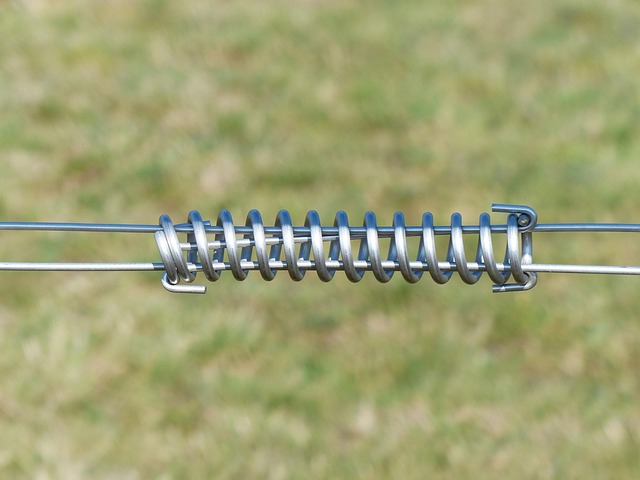For New Bedford, Massachusetts homeowners looking to enhance their outdoor spaces, installing a fence offers both privacy and security. This comprehensive guide navigates the process from start to finish. We demystify local fencing regulations, equip you with tips for selecting the perfect fence style for your yard, and detail a step-by-step installation process. Armed with the right tools, materials, and know-how, DIY enthusiasts can create a robust and aesthetically pleasing barrier that adds value to their homes.
- Understanding New Bedford's Fencing Regulations
- Choosing the Right Fence for Your Yard
- Measuring and Planning Your Fence Installation
- Gathering Essential Tools and Materials
- Step-by-Step Guide to DIY Fence Installation
Understanding New Bedford's Fencing Regulations
Before installing a fence in New Bedford, it’s crucial to familiarize yourself with local regulations. The city of New Bedford has specific guidelines regarding fence height, materials, and placement to ensure property lines are respected and neighborhood aesthetics maintained. These regulations can vary based on residential or commercial areas, so check with the local building department for precise details.
Understanding these rules is essential to avoid fines and potential disputes with neighbors. Ensure your chosen fence design complies with height restrictions, aligns with property lines, and uses materials permitted by the city. Staying informed about New Bedford’s fencing regulations will ensure a smooth DIY installation process and contribute to a harmonious community environment.
Choosing the Right Fence for Your Yard
When considering a DIY fence installation, one of the most important steps is selecting the right type for your New Bedford yard. The ideal fence should serve your specific needs—whether it’s privacy, security, or aesthetic appeal. For instance, a solid wood fence offers traditional charm and excellent privacy but requires more maintenance. On the other hand, a vinyl fence is low-maintenance, durable, and available in various styles, colors, and textures to suit different tastes. Chain-link fences are cost-effective, strong, and often chosen for security purposes, while a split-rail fence lends a rustic, country look. Consider your landscape design, the size of your yard, local climate conditions, and personal preferences before making your selection.
Measuring and Planning Your Fence Installation
When planning a DIY fence installation, New Bedford homeowners should start by measuring their desired fence length and width. This crucial step ensures that all materials are accurately cut and assembled. Take measurements along both straight and angled sections to account for any property irregularities. Create a detailed plan, including the type of fencing (wood, vinyl, chain link), posts’ placement, and any additional features like gates or privacy panels.
A well-planned fence installation saves time, effort, and potential costs down the line. Drawing out your design on paper or using digital tools can help visualize the entire process. This way, you can identify any challenges and make adjustments before breaking ground, ensuring a smoother DIY experience.
Gathering Essential Tools and Materials
Before beginning your DIY fence installation project, take time to gather all the essential tools and materials needed. This includes a measuring tape for accurate measurements, a level to ensure your fence is straight, and post holes digger or an excavator for creating the necessary openings in the ground. Don’t forget about the fence posts, panels, brackets, and any hardware like screws or nails specifically designed for outdoor use. It’s also beneficial to have a sturdy ladder to reach higher areas and safety gear such as gloves and eye protection to shield yourself from potential hazards.
Additionally, consider purchasing or renting power tools like a drill or post driver to make the installation process faster and more efficient. Ensure that your tool selections are suitable for the type of fence you’re installing. For example, wooden fences may require specific tools for nailing or screwing the boards into place, while vinyl fences might have unique requirements. Always double-check that all materials meet local building codes and regulations to ensure a safe and sturdy barrier.
Step-by-Step Guide to DIY Fence Installation
Installing a fence yourself can be a rewarding project, saving you time and money while allowing for customization to suit your New Bedford property. Here’s a straightforward step-by-step guide to help you achieve successful DIY fence installation. Begin by gathering all necessary materials, including posts, rails, fencing panels or pickets, concrete, tools like a post-hole digger, hammer, drill, and safety gear. Clear the area where your fence will stand, removing any grass, plants, or debris. Mark out the perimeter of your desired fence line using string and stakes for guidance. Dig holes for the fence posts, ensuring they’re deep enough (typically 1/3 to 1/2 the post’s height) to provide stability. Place a level in each hole to check that it’s plumb before filling with concrete. Allow the concrete to set completely. Once set, attach horizontal rails securely to the posts using brackets or nails, depending on your chosen fencing style. Securely fasten your fence panels or pickets to the rails, ensuring they’re aligned and level.
